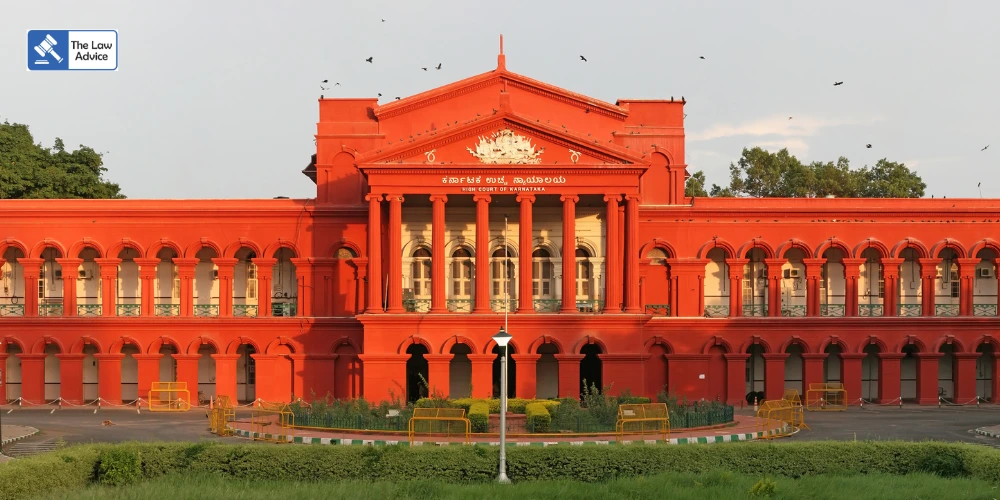The Karnataka High Court has issued a series of comprehensive directions to leverage modern technology in resolving complex land title disputes and safeguarding forest areas from illegal conversion. The court, recognizing the limitations of traditional land administration, has also ordered the formation of a high-level, inter-departmental committee to oversee the phased implementation of these directives.
The order was passed by Justice Suraj Govindaraj while hearing a land dispute case, observing that:
“Traditional, paper-based, and siloed administrative systems are inadequate to resolve complex land title conflicts. While Karnataka has made significant strides in land records modernization, the current situation proves that digitization alone is insufficient. The critical failure is the lack of a single, unified source of truth.”
The court noted that despite progress under the Digital India Land Records Modernisation Programme, digitized records are not fully integrated, resulting in fragmented data and disputes over ownership, usage, and encroachments.
To address these challenges, the court directed the constitution of a joint high-level committee (HLC), comprising:
• Representatives from the Chief Secretary’s office
• Heads of the Land and Revenue, Forest, Urban Development, and Law Departments
• A senior law officer, such as the Additional Advocate General
• Other departments as deemed necessary by the Chief Secretary
The committee will monitor the phased implementation, resolve inter-departmental conflicts, and submit quarterly compliance reports to the court. The court emphasized that a multi-sectoral committee is crucial to prevent historical lapses in environmental administration and ensure coordinated action.
The court outlined several technology-driven measures to bring transparency, efficiency, and accountability to land governance:
1. Automated Land Verification System
An integrated geospatial platform will be used to streamline all land-related applications. Every land transaction must be verified against the unified database in real-time, preventing unauthorized actions.
2. Conflict Alerts for Forest Land
If a parcel falls within a notified forest boundary, the system will automatically reject applications and generate a Conflict Alert. The Sub-Registrar’s Office and urban planning portals will be linked to prevent the registration of disputed properties or illegal building approvals.
3. Publicly Accessible Land Portal
A public-facing portal will allow citizens to access comprehensive, color-coded land reports, including:
• Land-use classification
• Ownership history (mutation records)
• Litigation or encumbrances
• Warnings for forest or no-development zones
This transparency mechanism is intended to act as a fraud alert, enabling citizens to verify land status and discouraging fraudulent transactions.
4. Reconciliation of Historical Records
The Department of Land and Revenue will undertake a state-wide project to reconcile all historical records with digitized forest and revenue maps. The objective is to create a single, authenticated record for each land parcel. Corrections will be limited to clerical errors and cannot alter legal ownership without due process.
5. Mandatory ULPIN Implementation
The Unique Land Parcel Identification Number (ULPIN) will serve as the primary key linking textual, spatial, and legal data for each parcel, ensuring data integrity and preventing future disputes.
6. Inter-Departmental Land Dispute Resolution Cell (IDLDRC)
A dedicated cell comprising representatives from Revenue, Forest, and Urban Planning authorities will mediate and issue binding inter-departmental rectification orders for conflicting records.
7. Digital Demarcation of Forest Boundaries
The Forest Department must complete geo-tagging and digital demarcation of all forest boundaries. High-precision maps using remote sensing and satellite data will be integrated into the unified geospatial platform.
8. Mandatory Geo-Verification Before Notices
Departments cannot issue notices or initiate prosecution for alleged encroachments without first verifying the geo-referenced location of the land parcel against the unified database. Future notices must include the ULPIN and geo-referenced map.
9. Alerts for Unauthorized Diversions
An alert mechanism will monitor any unauthorized diversion of forest land or land used beyond permissions granted. Alerts will notify all concerned officers for immediate action.
10. Automated Conflict Checks for Urban Planning
Urban planning authorities and local bodies are legally obligated to perform automated conflict checks against the unified land database before approving any layouts, conversions, or building permits. Applications on forest or disputed land will be automatically rejected.
11. Accountability of Officials
Officials issuing licenses, approvals, or permissions over conflicting land parcels will be personally accountable once the automated verification system is operational.
The court directed a three-phase, time-bound implementation:
• Phase I (Immediate - 3 months): Establish the HLC and IDLDRC, implement mandatory data-sharing protocols for new transactions.
• Phase II (Mid-term – 3 months to 1 year): Operationalize the unified geospatial platform and automated verification system, launch the public portal, and implement ULPIN for new land parcels.
• Phase III (Long-term - 1-2 years): Integrate all legacy records and complete full implementation.
The committee has discretion to consider additional measures to ensure transparency, efficiency, and protection of forest areas and other no-development zones.
• Case Title: Mohammed Shoiab AND State of Karnataka & Others
• Case Nos: WP 19674 OF 2024 (GM-FOR) C/W WRIT PETITION NO.392 OF 2021
The court’s directions mark a significant step in modernizing land governance in Karnataka, balancing technological innovation, legal clarity, and environmental protection. If implemented successfully, this framework could serve as a model for other states aiming to reconcile land records, prevent fraud, and safeguard ecological zones.
